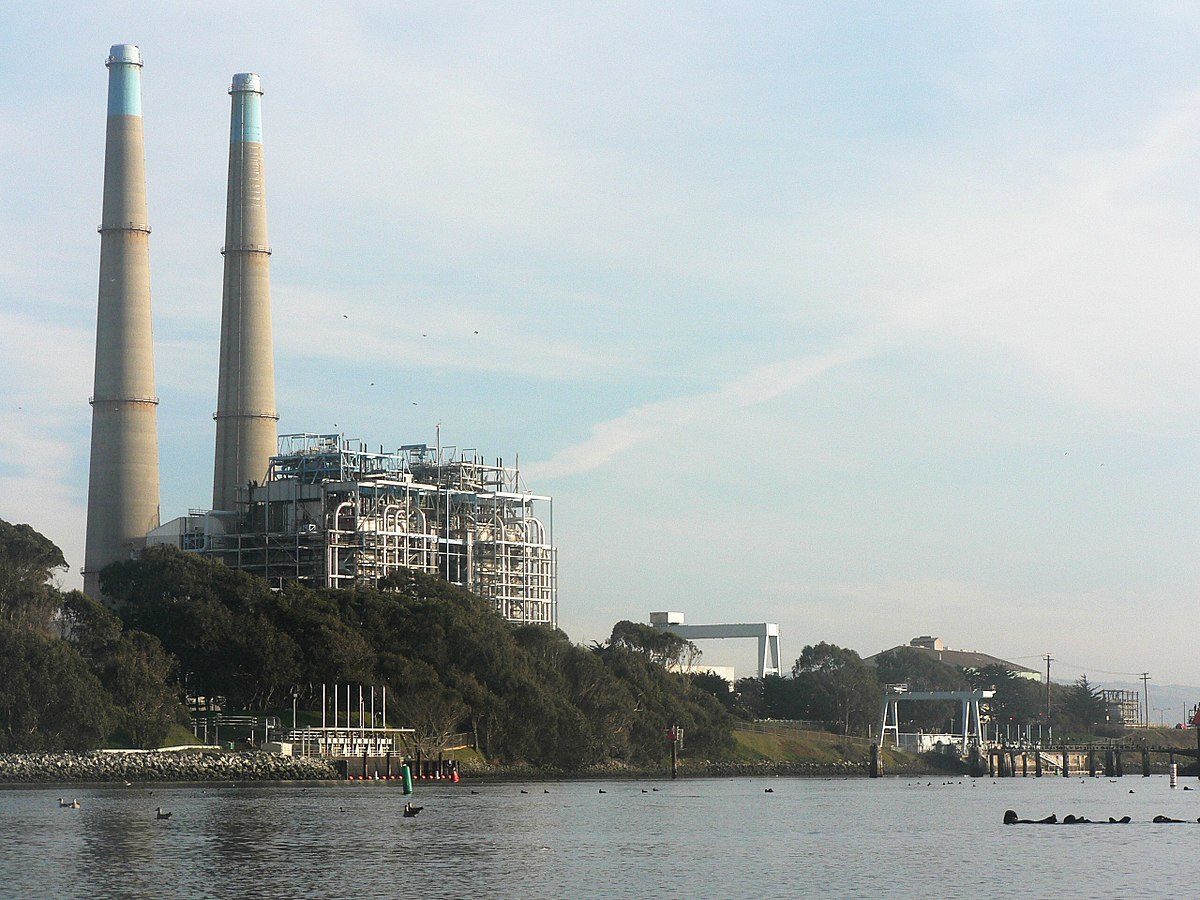From pv magazine USA
Batteries are getting big in California. And by big, I am talking about Dynegy’s plan to build a 300 MW battery project to replace a gas-fired power plant in Moss Landing, California.
The California Public Utilities Commission (CPUC) approved four contracts for battery storage contracts that utility Pacific Gas & Electric Company signed with developers, including the 300 MW lithium-ion battery from Dynegy, a 182.5 MW Tesla battery and two other li-ion battery projects totaling 85 MW, for a total of 567 MW.

The 300 MW battery is easily the largest lithium-ion battery project known to pv magazine. All have four-hour ratings, giving these batteries a total energy rating of 2.27 gigawatt-hours. All of these batteries will be located on or near the site of the Moss Landing Power Plant, a looming gas-fired power plant on Monterey Bay in California, 15 miles north of Monterey.
These batteries will not only connect to the substation and transmission infrastructure built for the Moss Landing Power Plant, but will replace the services provided by the plant itself. Plant owner Dynegy announced last February that it may close the plant, and according to CPUC another cogeneration plant in Gilroy has has signaled that it may go offline.
The potential closure of these plants and their replacement with batteries is part of a trend in California where conventional generation is increasingly being replaced with clean energy options including different combinations of transmission upgrades, renewables and batteries.
And it appears to be benefitting ratepayers. In CPUC’s order the organization found that the evaluation methodology which finds greater benefits than costs for the four projects is both reasonable and consistent with other energy storage solicitations, and that these plants offer greater value to ratepayers than other procurement options.
This content is protected by copyright and may not be reused. If you want to cooperate with us and would like to reuse some of our content, please contact: editors@pv-magazine.com.



Quote: “US regulators approved the world’s largest battery projects. CPUC signed four lithium-ion battery projects in California, USA, one of which at 300 MW is the largest battery project known today by pv magazine.”
I consider the manufacture of lithium-ion batteries in California to be untimely and unnecessary. Before this, it is necessary to normalize its climatic parameters. The first urgent work:
Restoration of all the rivers, ground and groundwater of California.
Restoration and growth of productive land, pastures and forests. Elimination of forest fires, and the destruction of poisonous smog.
The increase in hydropower production times. And only considering the amount of electricity produced, it will be possible to decide whether California needs lithium-ion batteries.
Sincerely, environmental programs developer, Victor Rodin. Ukraine. Khmelnitsky NPP. Tel. Kiev Star: 961336344. Mail: dorosydos@gmail.com, rodinviktor@lenta.ru
— — —
Цитата: «Американские регуляторы одобрили крупнейшие в мире проекты батарей CPUC подписала четыре проекта литий-ионных батарей в Калифорнии, США, одна из которых на 300 МВт является крупнейшим проектом батареи, известным на сегодняшний день журналом pv».
Я считаю изготовление литий-ионных батарей в Калифорнии делом несвоевременным и необязательным. Перед этим необходимо привести к норме её климатические параметры. Первые неотложные работы:
Восстановление всех рек, наземных и подземных вод Калифорнии.
Восстановление и прирост продуктивных земель, пастбищ и лесов. Устранение лесных пожаров, и уничтожение ядовитого смога.
Увеличение в разы производства гидроэнергии. И лишь посчитав количество производимой электроэнергии, можно будет решать, нужны ли Калифорнии литий-ионные батареи.
I have lived in the shadow of smokestacks from gas fired peaking power plants most of my life in Ventura County and in the Monterey Bay area. I felt tar on my feet as a kid from oil spills in the 1970s before drilling was banned on the California Coast. The move away from gas peaker plants to energy storage is necessary and timely. It is necessary because reliable energy is a pillar of the economy. The environmental impacts of natural gas fired power plants using once through cooling water have taken a toll on the health of wildlife, and have worsened the respiratory health of the young and old in California. It is time to offer more benefits than costs to California energy ratepayers, and reduce environmental impacts to wildlife in the coastal ecosystem, especially in areas of special biological significance, like Moss Landing. We should be using clean energy and energy storage to reduce and eventually eliminate the use of natural gas for grid power in California.